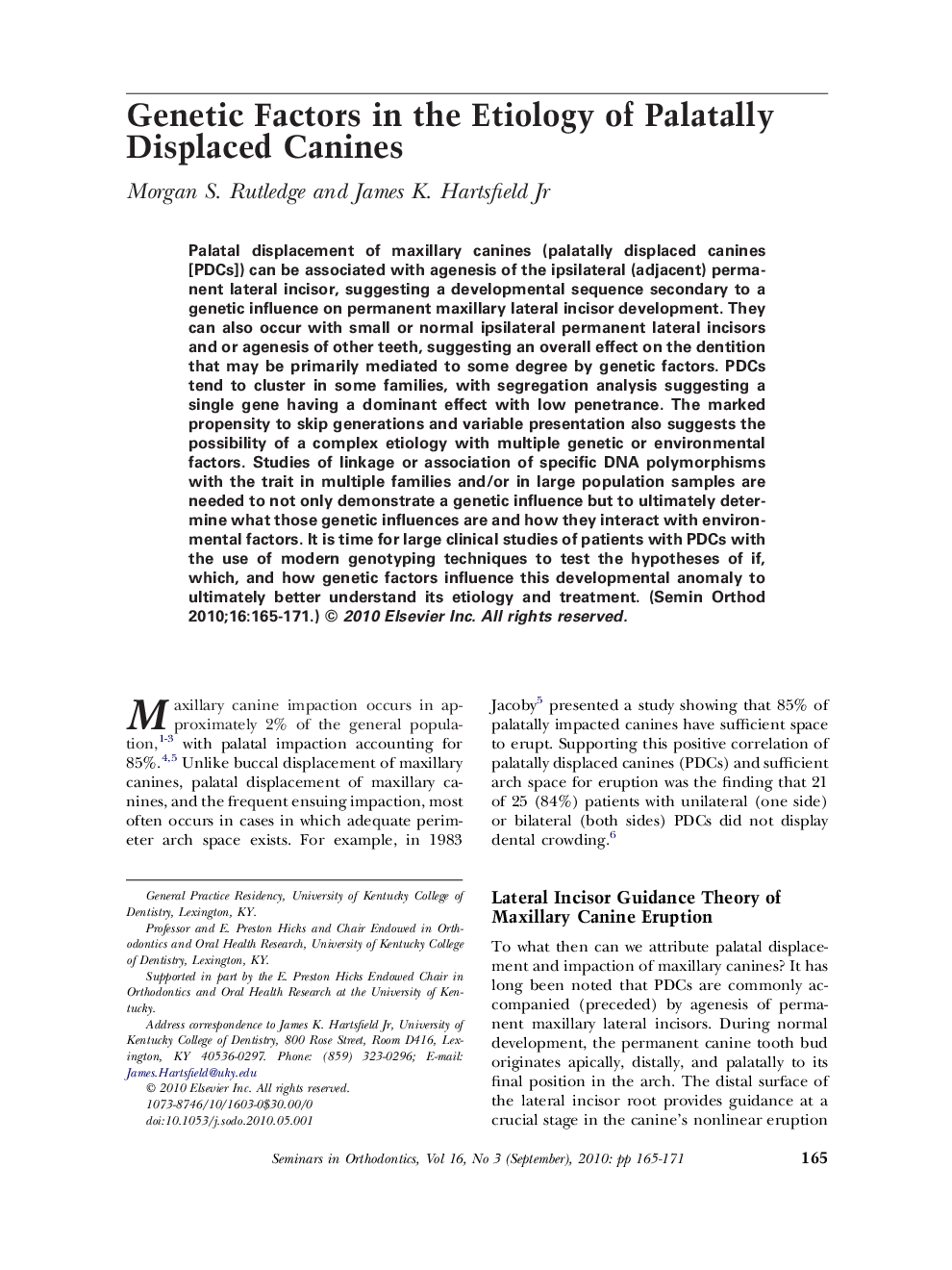| Article ID | Journal | Published Year | Pages | File Type |
|---|---|---|---|---|
| 3175702 | Seminars in Orthodontics | 2010 | 7 Pages |
Palatal displacement of maxillary canines (palatally displaced canines [PDCs]) can be associated with agenesis of the ipsilateral (adjacent) permanent lateral incisor, suggesting a developmental sequence secondary to a genetic influence on permanent maxillary lateral incisor development. They can also occur with small or normal ipsilateral permanent lateral incisors and or agenesis of other teeth, suggesting an overall effect on the dentition that may be primarily mediated to some degree by genetic factors. PDCs tend to cluster in some families, with segregation analysis suggesting a single gene having a dominant effect with low penetrance. The marked propensity to skip generations and variable presentation also suggests the possibility of a complex etiology with multiple genetic or environmental factors. Studies of linkage or association of specific DNA polymorphisms with the trait in multiple families and/or in large population samples are needed to not only demonstrate a genetic influence but to ultimately determine what those genetic influences are and how they interact with environmental factors. It is time for large clinical studies of patients with PDCs with the use of modern genotyping techniques to test the hypotheses of if, which, and how genetic factors influence this developmental anomaly to ultimately better understand its etiology and treatment.
